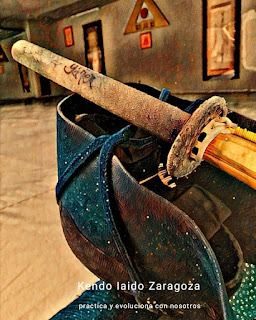El bushido (en japonés, «la vía del guerrero»), es un código ético que muchos samuráis seguían como seña de identidad de su compromiso como guerreros. Más que un conjunto de reglas o deberes, el bushido era una forma de vida en la que el guerrero demostraba su compromiso con el honor, la lealtad o la justicia, llegando a entregarse a la muerte si éstos se veían en peligro.
En las raíces del bushido se hallan corrientes religiosas y filosóficas como el Budismo, el Confucionismo o el Zen, de cuya combinación surgieron los siete preceptos que guían el código del samurái. En este sentido, uno de los principales textos dedicados a la «vía del guerrero», en donde encontramos estas virtudes descritas, es El libro de los cinco anillos (Go rin no sho) de Miyamoto Musashi (1582-1645), un samurái, pintor y calígrafo considerado como uno de los más célebres guerreros de su disciplina y el principal autor que plasmó el bushido en papel junto a Yamamoto Tsenetomo, autor de Hagakure. El camino del samurái.
A continuación recogemos los siete principios o virtudes del bushido que todo buen samurái debía seguir. Como sucede con el famoso texto El arte de la guerra de Sun Tsu, hoy en día muchas de sus recomendaciones y reflexiones pueden ser aplicadas en nuestro día a día.
El bushido y las 7 virtudes del guerrero
1. Gi (justicia)
Sé honrado en tus tratos con todo el mundo. Cree en la justicia, pero no en la que emana de los demás, sino en la tuya propia. Para un auténtico samurái no existen las tonalidades de gris en lo que se refiere a honradez y justicia. Sólo existe lo correcto y lo incorrecto.
2. Rei (respeto, cortesía)
Los samuráis no tienen motivos para ser crueles. No necesitan demostrar su fuerza. Un samurái es cortés incluso con sus enemigos. Sin esta muestra directa de respeto no somos mejores que los animales. Un samurái recibe respeto no sólo por su fiereza en la batalla, sino también por su manera de tratar a los demás. La auténtica fuerza interior del samurái se vuelve evidente en tiempos de apuros.
3. Yu (coraje)
Álzate sobre las masas de gente que temen actuar. Ocultarse como una tortuga en su caparazón no es vivir. Un samurái debe tener valor heroico. Es absolutamente arriesgado. Es peligroso. Es vivir la vida de forma plena, completa, maravillosa. El coraje heroico no es ciego. Es inteligente y fuerte. Reemplaza el miedo por el respeto y la precaución.
4. Meiyo (honor)
El auténtico samurái solo tiene un juez de su propio honor, y es él mismo. Las decisiones que tomas y cómo las llevas a cabo son un reflejo de quien eres en realidad. No puedes ocultarte de ti mismo.
5. Jin (benevolencia)
Mediante el entrenamiento intenso el samurái se convierte en rápido y fuerte. No es como el resto de los hombres. Desarrolla un poder que debe ser usado en bien de todos. Tiene compasión. Ayuda a sus compañeros en cualquier oportunidad. Si la oportunidad no surge, se sale de su camino para encontrarla.
6. Makoto (honestidad)
Cuando un samurái dice que hará algo, es como si ya estuviera hecho. Nada en esta tierra lo detendrá en la realización de lo que ha dicho que hará. No ha de «dar su palabra.» No ha de «prometer.» El simple hecho de hablar ha puesto en movimiento el acto de hacer. Hablar y hacer son la misma acción.
7. Chuugi (lealtad)
Para el samurái, haber hecho o dicho «algo», significa que ese «algo» le pertenece. Es responsable de ello y de todas las consecuencias que le sigan. Un samurái es intensamente leal a aquellos bajo su cuidado. Para aquellos de los que es responsable, permanece fieramente fiel.













